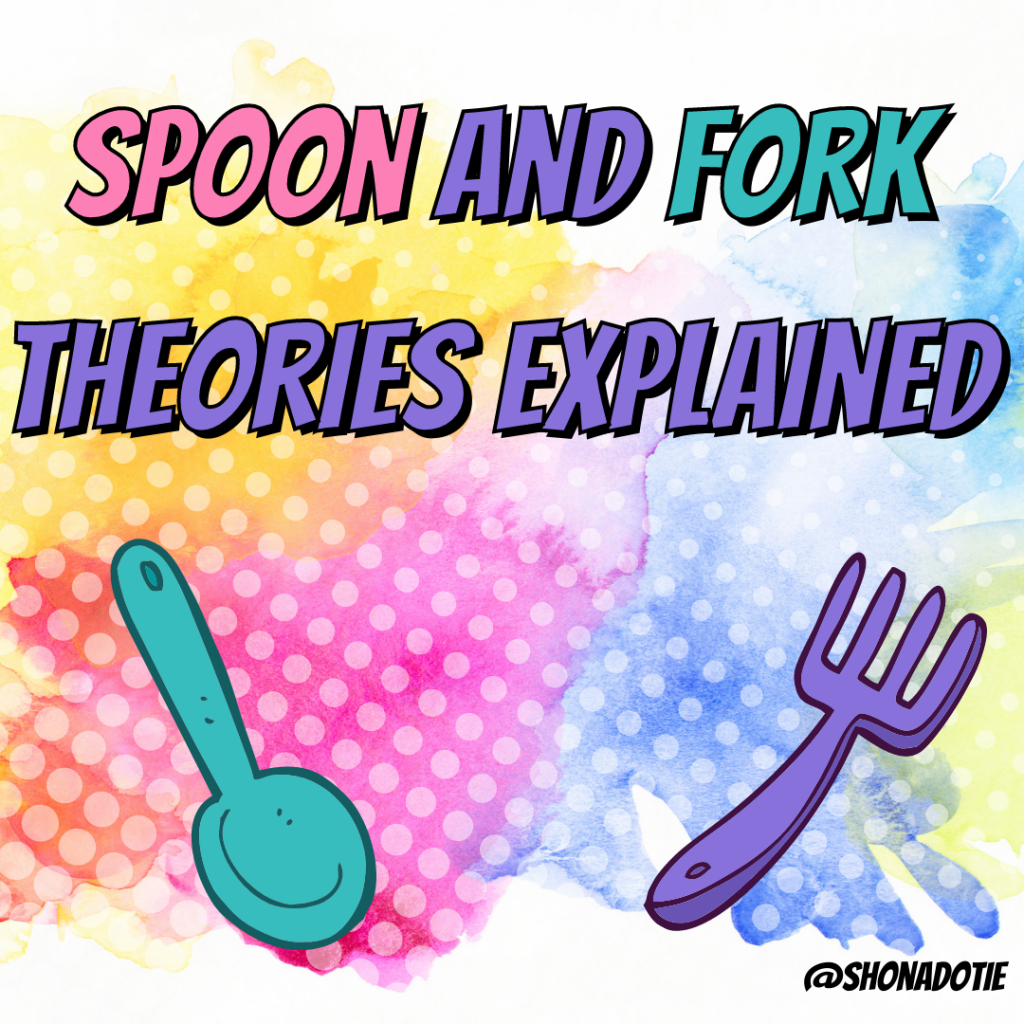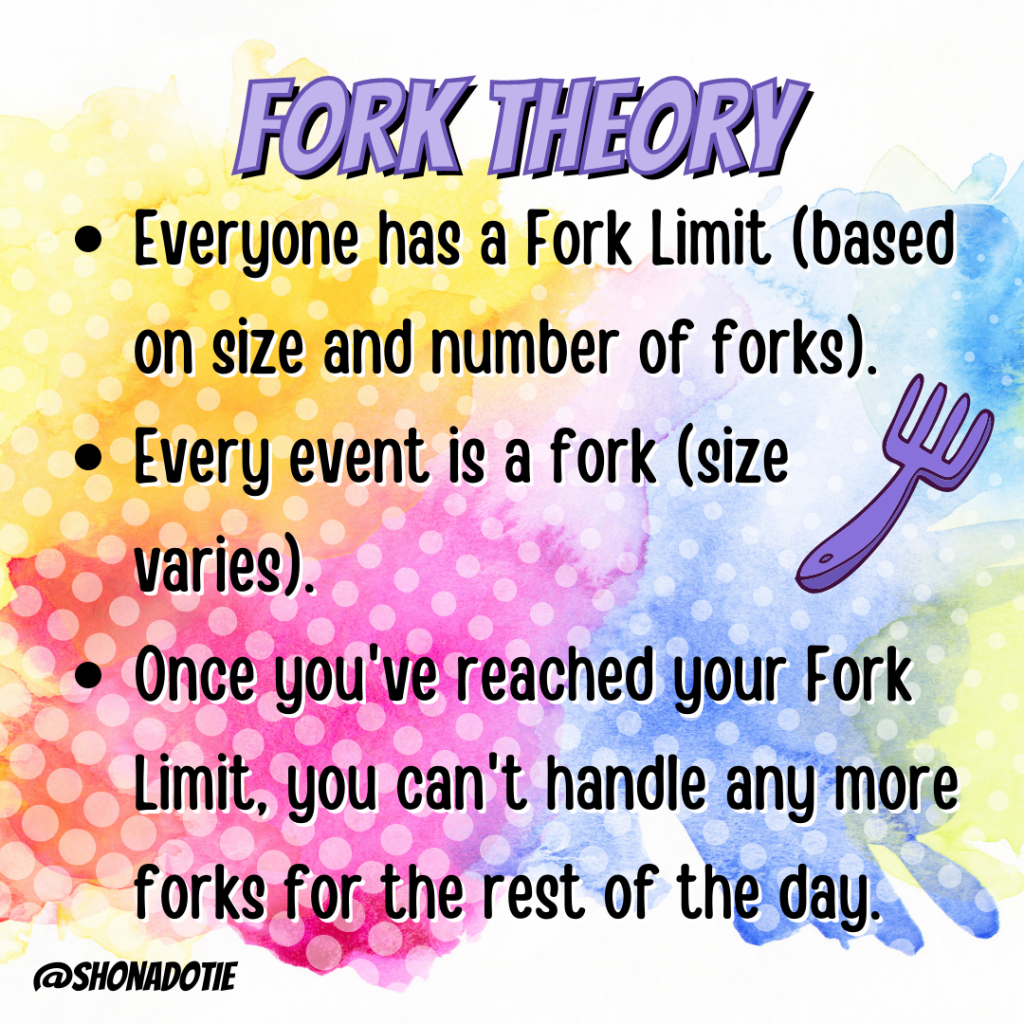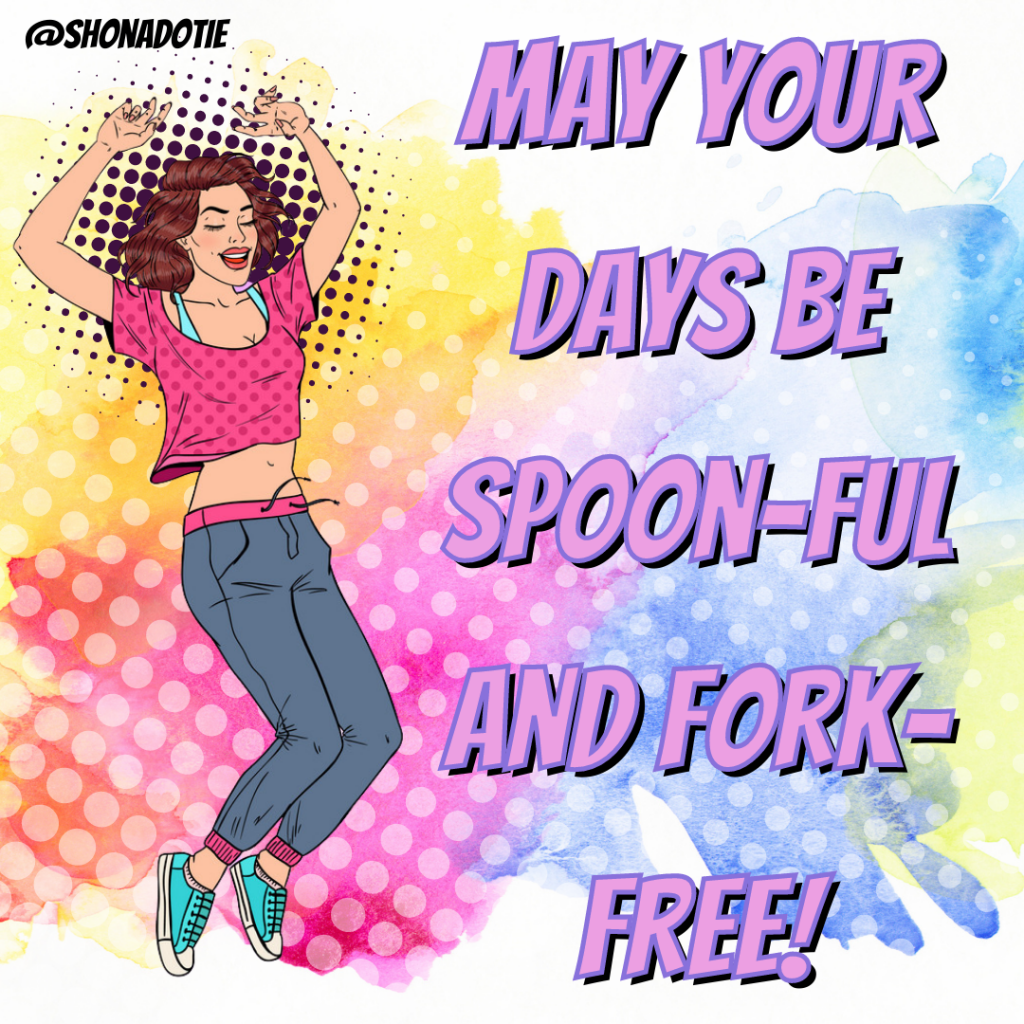
Hi everyone! My name is Julie (she/her/hers) and I’d like to talk to you about something really cool. It’s about emotions and cutlery. I know, sounds random, but bear with me.
You might not think cutlery can become the basis of a life-changing way to view your emotions, but, surprise, it can! And not just one type of cutlery, but two. Let me introduce y’all to my two favourite theories of emotion: spoon theory and fork theory.
Spoon theory was first imagined by Christine Miserandino to explain her experience with Lupus to her best friend. Christine said that when you are healthy, you have endless possibilities for what you can do each day. When you are sick, those possibilities are more limited. She handed a bunch of spoons to her friend and told her the spoons to represent what you can do in a day. They are kinda like your energy level. You never know how many spoons you will have in a day, or how many things you might have to do each day, but every task (and she means every task) takes a spoon and once you are out of spoons, you are done.

As the theory began to spread, people have used it more and more broadly! The more people who know about spoon theory and can talk about the number of spoons they have, the better the theory works as an explanation. Physical and mental illnesses, everyday stressors, individual days where you just feel terrible? All of them can be better understood with spoon theory.
For me, it’s anxiety. Throughout my life, I’ve felt myself running out of spoons when I still had things to do. I didn’t know how to explain it, why I was bursting into tears at the slightest inconvenience or being suddenly unable to bear the prospect of interacting with people for one more moment. Now I know better. I can look back at those times of panic and dread and see how I’d already used up my daily spoon allotment.
Now, the fork theory is a little different and helps in a different way. It comes from the phrase “stick a fork in me, I’m done.” What you might say when someone adds yet another task to your already long to-do list? Well, the forks are also tasks (or events), but instead of being taken away, like spoons, they are added (or stabbed in). Forks can be all different sizes. Maybe responding to a text is a little fork and getting bad news about a family member is a big one. Same as spoon theory, every person has a certain number or volume of forks they can handle at a given moment (called the Fork Limit), and it changes from day to day. And once you’ve reached your limit, even the smallest additional fork can send you over the edge.

I really like the fork theory because it gives you a roadmap to managing your forks and avoiding surpassing your limit. Once you’ve decided how big each of your current forks are, you can take care of the smallest or simplest ones first and get them out of the way, leaving you with more energy to deal with the big ones.
For example, if you are tired and hungry, and you have to go to the bathroom, but you also have a meeting coming up, go to the bathroom and have a quick snack first. Then go to your meeting, and take a nap.
The lesson at the end of the day is that there is a lot more beneath the surface than you can see, even if you spend a lot of time with someone. You don’t know how many forks and spoons they’ve had in a day, and how many they have left. A lot of times, they don’t even know themselves. The best thing to do when they’ve reached their limits is to believe them and let them do what they need to do to feel better.




